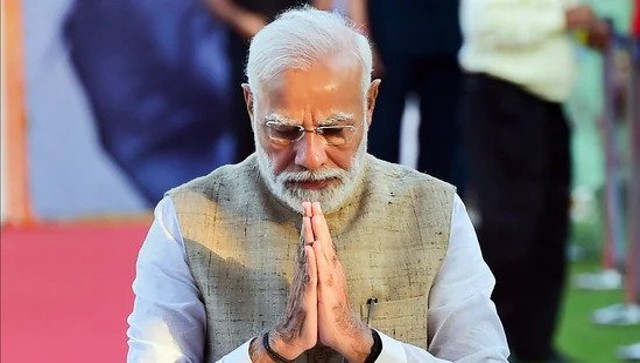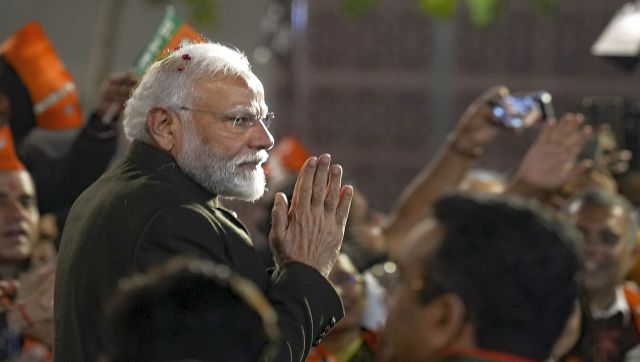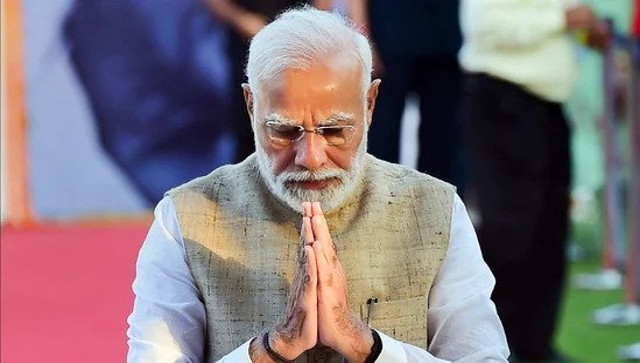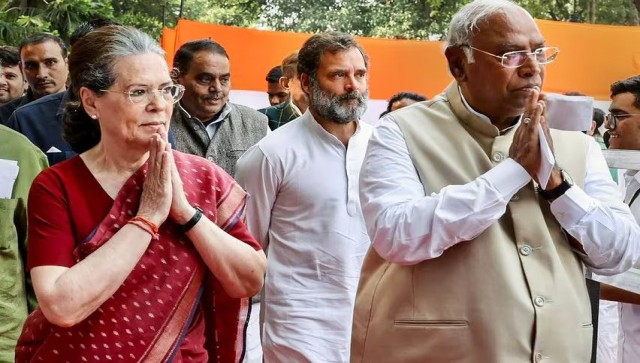In one room sits Gandhi at his ashram, shaving his beard with a Gillette razor. In the next room is Mao Zedong, standing resolute in front of the entrance to the Red Academy.
These two figures stand in close proximity in the exhibition Envisioning Asia, which displays photographs by Walter Bosshard, who was equipped with a keen eye for capturing portraits, as well as the ability to find access to leaders of great stature.
Housed in the Dr Bhau Daji Lad Museum, Mumbai, the exhibition is in its third iteration. “Bosshard was one of the first to embody the term ‘photojournalist’,” said Peter Pfrunder, the director of the Swiss Foundation for Photography, who is one of the curators of the exhibition. Peter and Gayatri Sinha, the director of Critical Collective, spent over a year building the exhibition; the negatives of the photographs needed to be worked on substantially, as they had undergone a lot of damage.
“Though Bosshard himself did not compare Gandhi and Mao in his writings, what is of note is the close timing of the revolutions both men were leading, the immediacy of these revolutions and uncertainty about their success,” Peter added. And this is amply evident in the different ways in which Bosshard photographed them.
A Swiss photojournalist in Asia
In 1927, Walter Bosshard was assigned the documentation of a geographical expedition through the Himalayas, from India to the Taklamakan Desert. Notably, he was self-trained; during his time, there was no formal education about photography for journalism, though photographers did work for the press. He tried to sell the images from this trip in 1928.
After returning to Europe, he longed to go back to Asia. In March 1930, he was sent by the Münchner Illustrierte Presse to India to document the Independence movement and growing unrest. “He travelled for eight months, across 20,000 kilometres, and he is said to have interacted with around 5,000 people,” Peter said.
“He was able to witness the Dandi March in its entirety – from the beginning at the Sabarmati ashram to the moment when people picked up salt in protest,” Gayatri explained.
One witnesses both the personal and political in his pictures of Gandhi – pictures of him laughing (a rarely photographed image), him reading the papers, and eating onion soup sit next to shots of the Dandi march where swathes of people are walking.
There are some striking images of boycott in its various forms, too: of slogans painted on umbrellas, of Gandhi caps, of Urdu newspapers reporting on unrest. The pictures he would take in India would be circulated across the world.
The highlight of this reporting assignment was the cover of Münchner Illustrierte Presse in May – of Gandhi reading the newspaper, his head lightly rested on his arm. A master of both the image and word, Bosshard’s career took off when a new age had begun in news magazines. “Increasingly, there was a greater focus on images; the text accompanied the image. The kind of images editors were looking for was also new… Political magazines in Europe awakened to the brewing revolutions in Asia – specifically in India and China,” said Peter.
Compare and contrast
“Bosshard spent many years (six, to be precise) in China because he was absorbed by the political scenario and attracted to Chinese culture. He even learnt the language,” says Peter.
He was the first European journalist to reach Mao, who then lived and operated in in the caves of Yan’an.
The pictures from China, taken against the backdrop of a dramatic landscape, depict soldiers of the Red Army marching and driving through valleys, political billboards, the bombing of Hankou, and China’s nomadic communities. Bosshard was the first to make a silent film on Mao, which can also be viewed at the exhibition.
One way to study Envisioning Asia is to view the pictures of the Dandi March and Mao’s march in contrast. Mao’s march appears militarised, and was material in nature; on the other hand, the Dandi march was spiritual, Gayatri remarked. The Chinese leader is a remote figure, whereas it is difficult to single out Gandhi amid the marchers.
In his documentation of Mao, one sees more text and less photos, and with Gandhi, we see the exact opposite, said Peter. “He captured what Mao’s hands looked like to say that he was like any other person… He documented those aspects of politics which were not well-known. One of the pieces he wrote from China was titled ‘The Life of a Chinese Guerilla’,” Peter added.
Making a name for himself
Bosshard used film cameras like the ones made by the brand Plaubel, which were heavy ones and whose negatives needed to be changed with every use. He also used a Leica, though not during his travels in India. The publications he mainly contributed to were Berliner Illustrirte Zeitung and Münchner Illustrierte Presse, but he also wrote and photographed for Life magazine, and other international publications.
“Envisioning Asia is the first time that these photographs by Bosshard are being taken out of the archives,” said Gayatri. A lot of Bosshard’s work was lost during World War II, in a sense split up between archives and negatives; the latter often did not have context or information by themselves.
He was a reporter as much as a photojournalist. “Some of his images may not be ‘fine art’; he was focused on getting both elements – the visual as well as the text,” says Peter.
Gayatri regards Bosshard’s documentation of the Dandi march as a “very modern moment”. “This moment came to India only in the 60s, with photographers such as Raghu Rai, who introduced what would go on to become a template. This template – or aesthetic – emerged in Europe in the 30s… It is not as though there is no documentation of Gandhi or the Dandi March… Bosshard plays an important role because we [Indians> did not know that foreign journalists had interacted with Gandhi in that time period. Henri Cartier-Bresson and others came 17 years later,” says Gayatri.
“Bosshard generates mass energy with the photos of the Dandi March… this is nationalism at a street level,” says Gayatri. Just as the salt march marked the zenith of his reportage in India, the fall of Hankou was an important year for his work in China. It was the site that witnessed some of the worst bombings by Japanese forces. He stayed in the area until the Japanese had invaded Hankow. During this period he met photojournalist Robert Capa, with whom he would soon become friends. Their work would even be published by the same magazines.
Bosshard himself featured on the cover of the Berliner Illustrirte Zeitung.
“What does this mean in the context of the media? That photographs were becoming more important than the story,” Peter explains.
Engaged subjects – and a master photographer
“In Bosshard’s intimate pictures of Gandhi, the subject fills the frames… he was keen to portray him as a man of the masses,” Gayatri says. Compare this to later pictures taken by photographers like Margaret Bourke-White; one notices a distance from the lens.
What is of note, Gayatri says, is the way Gandhi responds to Bosshard’s camera. “While he does not react to the camera, he did allow proximity. He allowed Bosshard into his inner circle. Remember that Gandhi spoke of the ‘darshan dilemma’ – the unrelenting fixity of public gaze directed at him.”
One of the most significant features of Bosshard’s work presented in this exhibition is that which is not pictured – the access he had to famous personalities and the connect he established with them. “He was clever at building networks. The first time he’d visit a place, he wouldn’t take pictures… he built trust over time,” says Peter. Specifically when it comes to Mao, it was the Chinese leader’s close friends who helped Bosshard to reach him. He found Mao contemplative, Peter said.
Though Bosshard’s pictures portray a certain type of intimacy and nearness to their subjects, they don’t necessarily portray them in an overtly positive light.
“He was not an admirer, he was a critical observer of these leaders. He did not want to push his own opinions… He was not sure what would come of this utopia [India on the cusp of independence>… He was a believer of democracy but was critical of hero worship. This probably stemmed from the Swiss scepticism of people who become too powerful,” adds Peter.
Bosshard also had a keen political sense, and was critical of Indian royal states siding with the coloniser, the curator-duo explained. “He didn’t see the Indian response to the British as a monolithic stance,” Gayatri explains. This also reflects in his decision to stop contributing to German magazines once the Nazis had taken over such publications.
Envisioning Asia: Gandhi and Mao in the photographs of Walter Bosshard is on display at the Dr Bhau Daji Lad Museum till 24 March


)




)
)
)
)
)
)
)
)